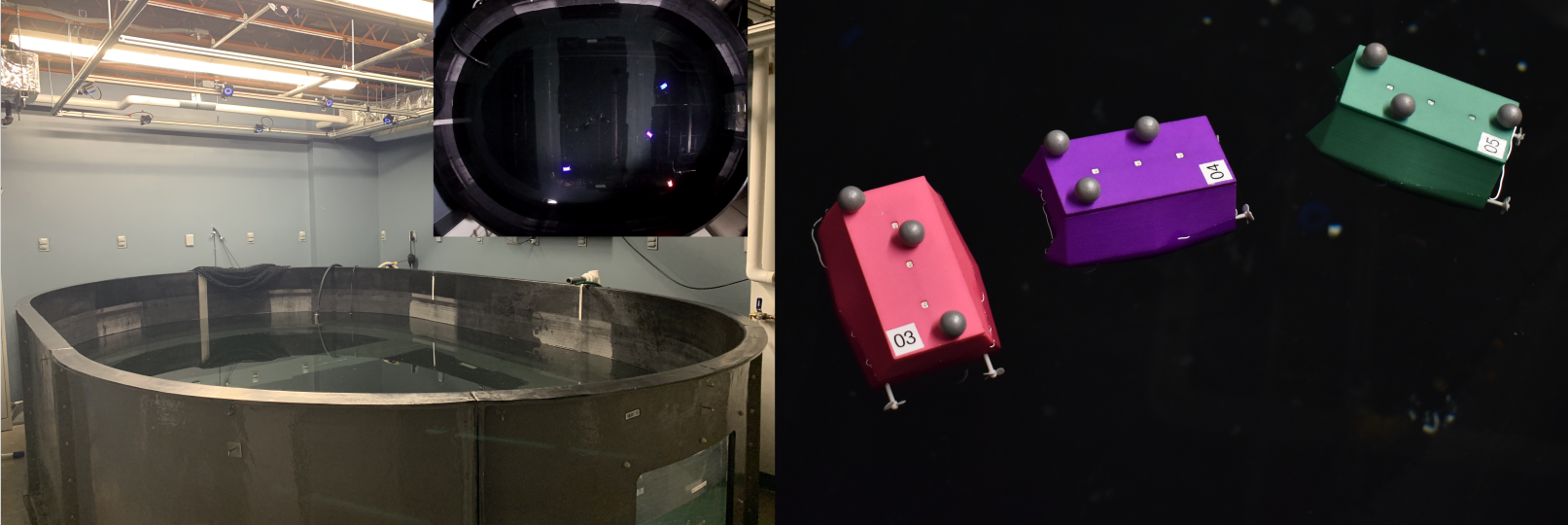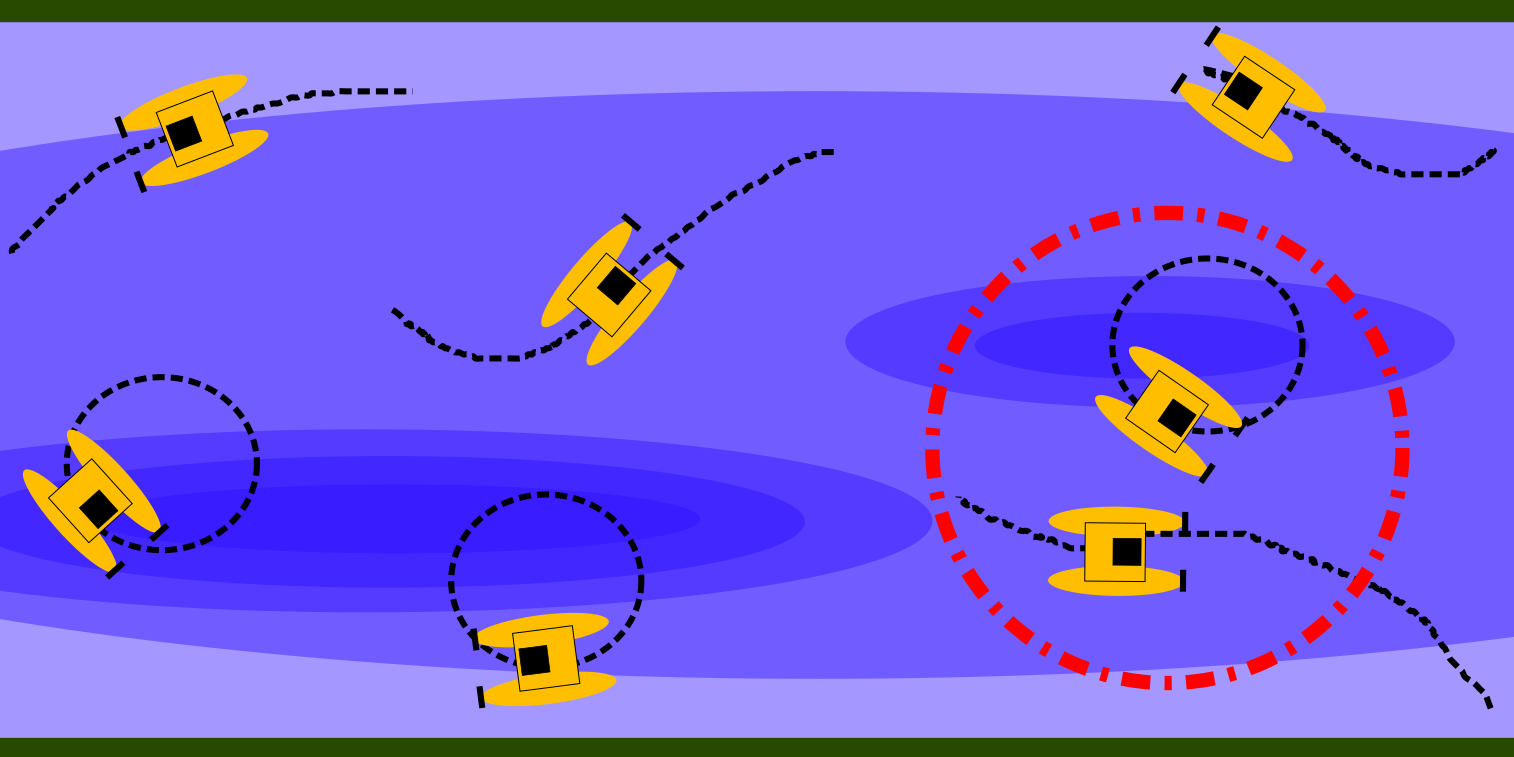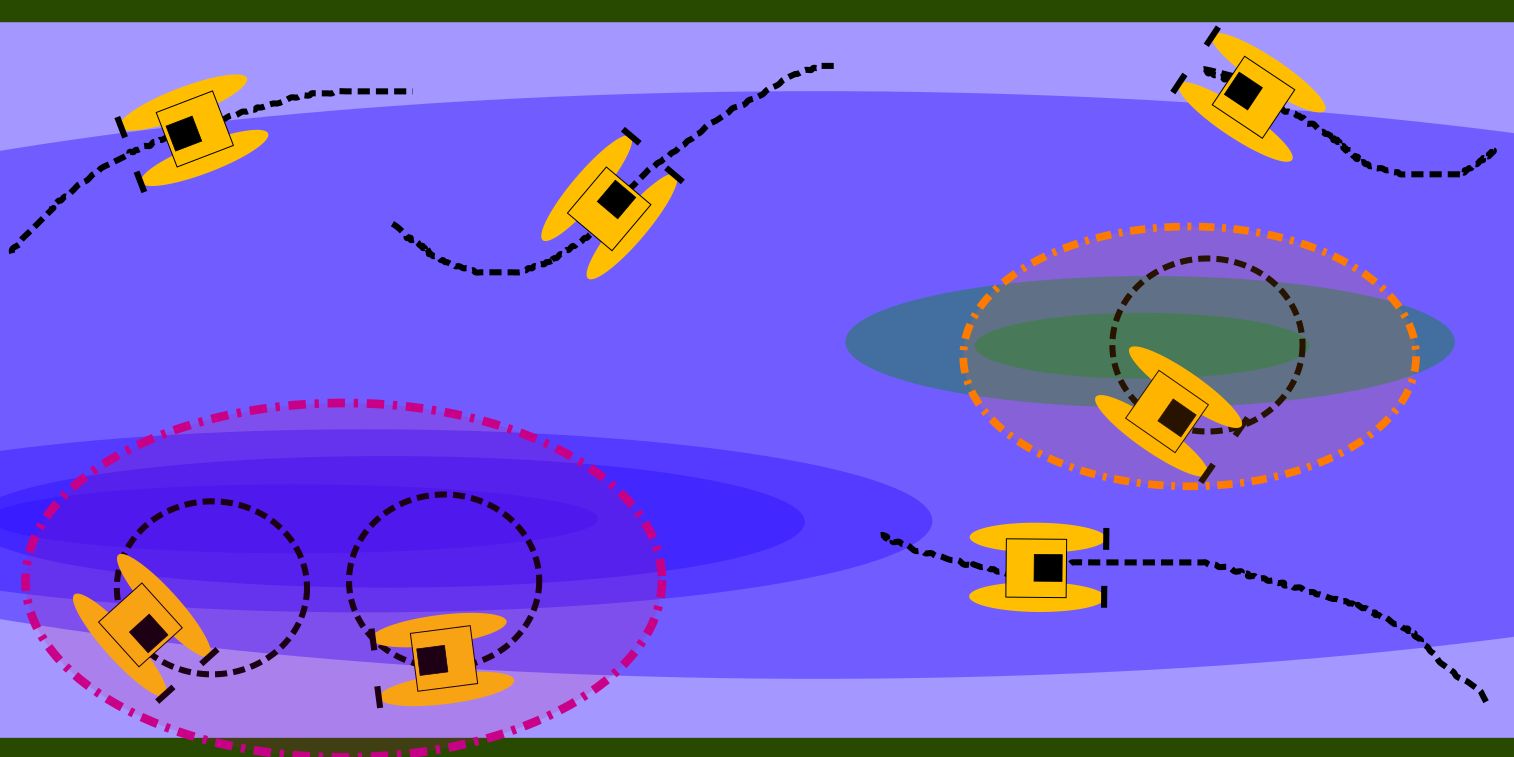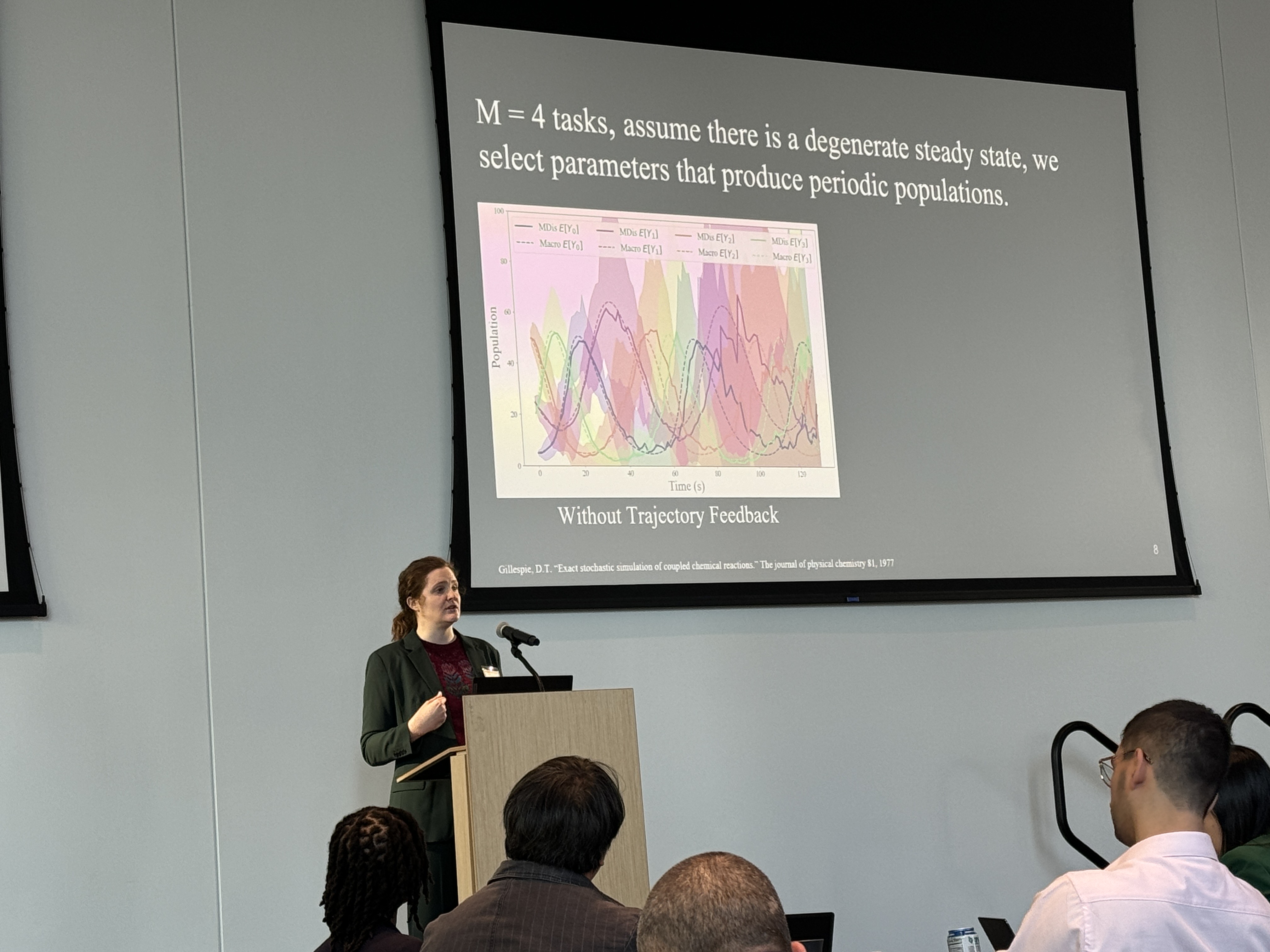Collaborative Macroscopic Ensemble Modeling and Control of Robot Teams
We present solutions to the multi robot task allocation (MRTA) problem by controlling robot-robot collaborations to inform time-varying team-wide objectives at the macroscopic level.
Research Objective:
Environmental monitoring requires assigning robots to sampling locations. This is a variant of the Multi Robot Task Allocation (MRTA) problem. We know that some dynamic environments have known periodic behavior, e.g., rivers with tidal shifts. Robots must perform coordinated sampling strategies at specific moments in time which is categorized as the scheduling and coalition formation problem. Solutions to this problem can be categorized as follows. On one hand, microscopic solutions plan and control for individual robots and require expensive replanning, e.g., when environment or task conditions change. On the other hand, macroscopic solutions design team-wide objectives to distribute robots throughout an environment. Macroscopic approaches have been shown to have nice analytical guarantees, scalability, and can even be applied to heterogeneous robot collectives. However, macroscopic methods often ignore robot-robot collaborations in favor of model simplicity. The resulting models are asymptotically stable, i.e., given a desired distribution of robots we can find model parameters that will ensure those populations are achieved. The problem we aim to address is: design a macroscopic ensemble modeling and control method for multi robot teams that controls time-varying populations of robots. Our solution introduces robot-robot collaborations to the model which allow for the potential of time-varying distributions of robots in the workspace.

We experimentally verify our methods using the miniature Autonomous Surface Vehicles (mASVs) which are built in house at the ScalAR lab. Our testing environment is a 4m x 3m x 1.5m tank, equipped with 13 OptiTrack cameras, and the capability to make gyres in the tank. At any given time, we can have upwards of 10 mASV in the tank performing different control strategies. Within the tank we have demonstrated heterogeneous teams using Crazyflie robots and mASV simultaneously.
Relevant Publications:



I recently presented at DARS ‘24 at Cornell Tech on collaborative macroscopic ensemble modeling and control of robot teams. We showed that our proposed model had the possibility of capturing time-varying populations and we introduced two interpretations of robot-robot collaboration. This work had an emphasis on studying the well-mixed assumption which is critical when using macroscopic ensemble methods. Our work was well received by the audience and I had a great round of questions after my talk!
I presented our work to IROS ‘23 in Detroit, MI. This work covered the application of collaborative macroscopic ensemble methods to environmental monitoring scenarios. Our solution avoids partitioning the environment and allows the robots to more flexibly perform the monitoring task.
Our work presented at DARS ‘22 uses a nonlinear stochastic model to achieve time-varying distributions of robots which was a limitation of previous linear stochastic models. Our results suggest further work is needed to understand how macroscopic models can better incorporate feedback from the environment.
This work is done in collaboration with Dr. Thales C. Silva and Dr. M. Ani Hsieh at the University of Pennsylvania GRASP lab.